Background Folders to save information Help and Advice
classeurs de rangement pour stocker des informations
Discover how to get the most out of your relationship with MICHELIN® with this collection of literature, technical documents, warranties and more.
Trucks and Buses
Retreads
Agricultural Equipment
Off-Road Equipment
MICHELIN® Truck Tire Data Book
Download (15. 67Mb)
MICHELIN ® SmartWay® Tires
Download (1.26Mb)
Nail Hole Repair Manual
Download (489.76Kb)
MICHELIN® Truck Tire Reference Chart
Download (7.36Mb)
MICHELIN® X One® Brochure
Download (13.22Mb)
Load and Inflation Table Standard
Download (813. 79Kb)
79Kb)
MICHELIN® Truck Tire Service Manual
Download (14.74Mb)
MICHELIN® OnCall Brochure
Download (589Kb)
Tubes and Flaps information
Download (36.57Kb)
MICHELIN® Tire Care Brochure
Download (651.68Kb)
MICHELIN® RV Brochure
Download (3. 68Mb)
68Mb)
Additive "Bloom" on Tires
Download (224.11Kb)
Change to NHTSA Tire Identification Number (TIN)
Download (49.6Kb)
Lubricant for MICHELIN® Truck Tires
Download (234.34Kb)
Tire Damage Resulting from Non-Compliant Runflat/Beadlock Devices
Download (106.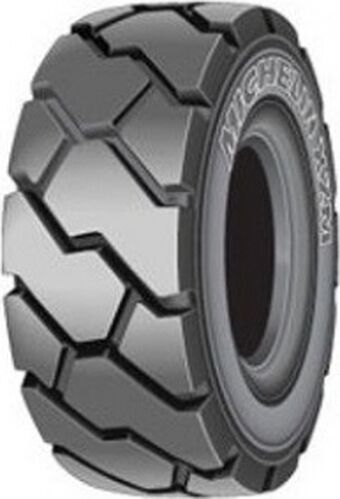 78Kb)
78Kb)
X One® Tires - Recommendation for Use in 4x2 Applications
Download (36.07Kb)
X One® Tires - Stacking of MICHELIN® X One® Tires
Download (61.26Kb)
Sacrificial Rib / Decoupling Groove Damages
Download (939.25Kb)
Tires on Certain Globalized ("EURO") Vans
Download (584.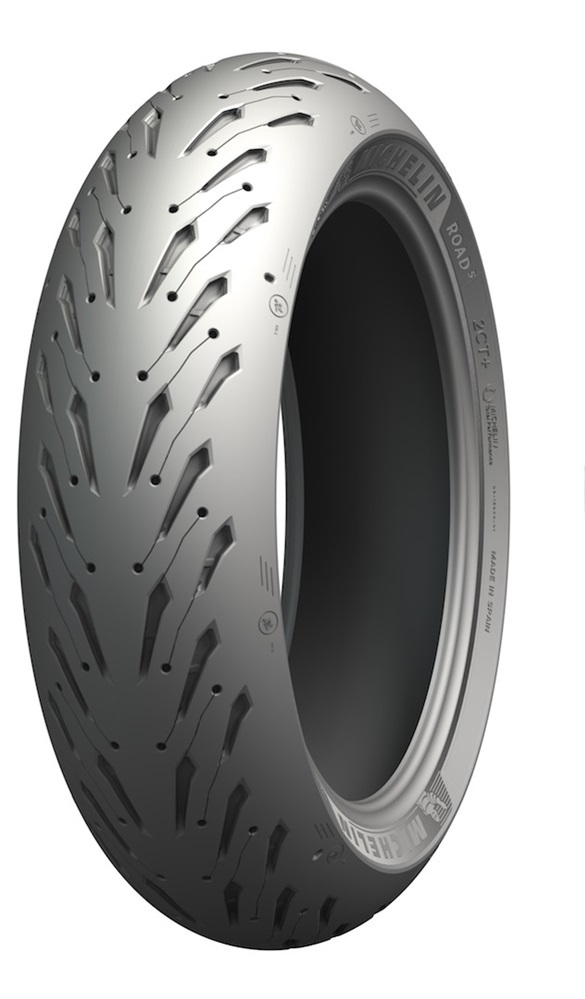 88Kb)
88Kb)
295/75R22.5 and 285/75R24.5 New Dimensions
Download (51.57Kb)
Alcoa Wheel Notification #2015-053
Download (926.92Kb)
Compliance Safety Accountability (CSA) and Tire Maintenance
Download (162.15Kb)
Tread Depth Measurement on Tires Retreaded with the XDU®S Pre-Mold Retread
Download (123. 68Kb)
68Kb)
X One® XZU®S Repair Recommendations
Download (165.13Kb)
295/60R22.5 LRJ Tires Used on 8.25 x 22.5” Wheels
Download (62.83Kb)
Energy Guard Owners Manual
Download (14.62Mb)
315/80R22.5 LRL Tires Used in Motor Coach and Motor Home Service
Download (83.57Kb)
Service Life for RV/Motorhome Tires
Download (61. 54Kb)
54Kb)
Internal Balancing Materials and/or Coolants
Download (43.69Kb)
X One® Tires - Single Wheel Approval Information Sharing
Download (71.42Kb)
Use of Sealants in MICHELIN® Truck Tires
Download (43.48Kb)
Use of 2" Outset Wheels with MICHELIN® X One® Tires
Download (44.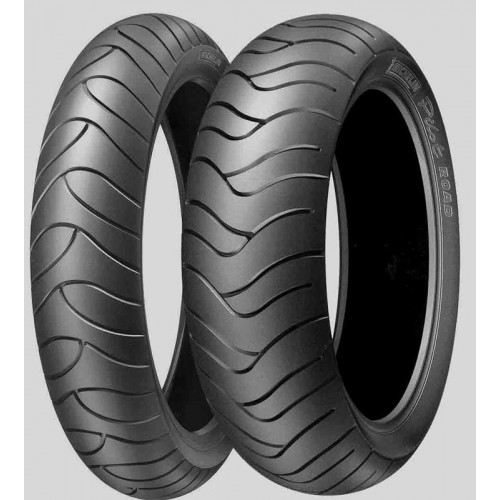 75Kb)
75Kb)
Energy Guard Skirt Bracket Head Cracking
Download (321.02Kb)
12R22.5 & 305/85 R22.5 Tires Used in Urban Transit Service
Download (44.88Kb)
Bead Repairs on the XZU®S2
Download (63.86Kb)
X® InCity Z SL and X® Incity Grip D 305/85R22.5 LRJ
Download (519.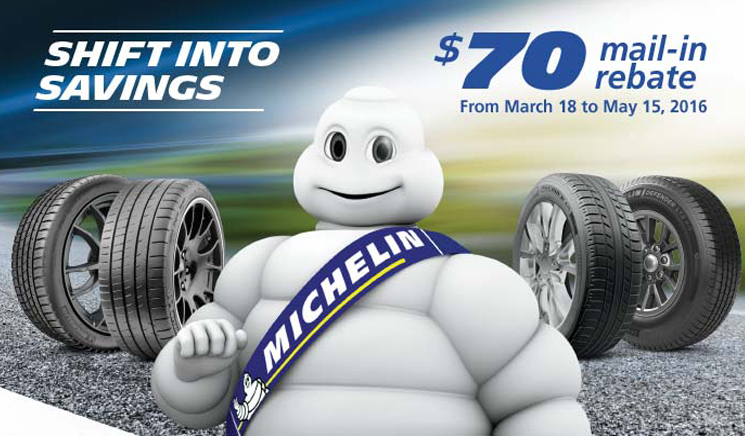 92Kb)
92Kb)
X One® Tires - Mounting on Different Wheels
Download (304.83Kb)
X One® Tires - Single Wheel Considerations
Download (73.95Kb)
MICHELIN® Metro Tire Usage, Maintenance and Inspection Recommendations
Download (67.44Kb)
Energy Guard Bending Member Damages and Disengagement
Download (1. 13Mb)
13Mb)
MICHELIN® Truck Tire Warranty
Download (789.77Kb)
MICHELIN® X® MULTI D Confidence Guarantee
Download (786.64Kb)
MICHELIN® Agilis CrossClimate® Guarantee
Download (3.69Mb)
MICHELIN® X One® Total Satisfaction Guarantee
Download (173.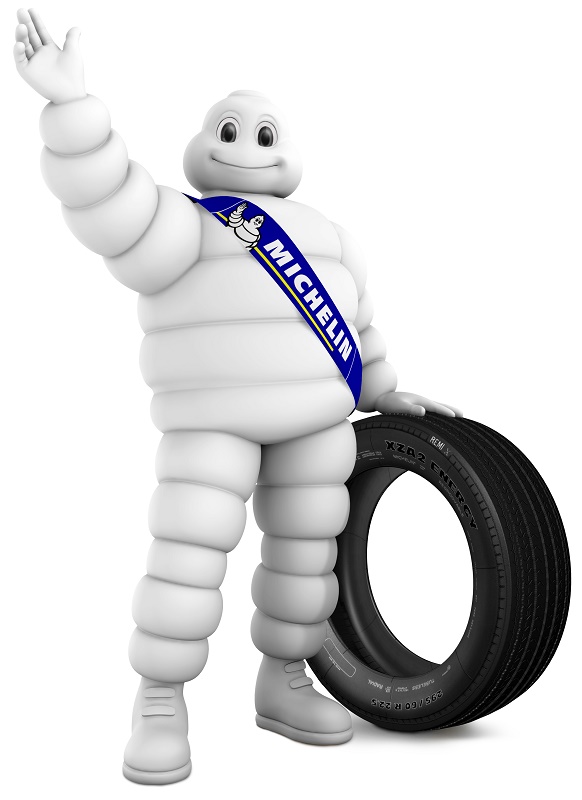 61Kb)
61Kb)
MICHELIN® X® LINE ENERGY Z Mileage Guarantee
Download (310.29Kb)
MICHELIN® X One® Total Satisfaction Guarantee - New Truck or Trailer
Download (171.74Kb)
MICHELIN® Truck Tire X® WORKS Road Hazards Guarantee
Download (163.34Kb)
MICHELIN® X One® Total Satisfaction Guarantee - Secondary Market Tractor or Trailer
Download (171. 46Kb)
46Kb)
MICHELIN® Road Hazards Guarantee
Download (940.87Kb)
Michelin Retread Technologies Quick Reference Tread Guide
Download (1.77Mb)
MICHELIN® SmartWay® Retreads
Download (1.32Mb)
Why Choose MICHELIN® Retread?
Download (615. 7Kb)
7Kb)
MICHELIN® X One® Line Grip D Pre-Mold Retread Mileage Guarantee
Download (99.02Kb)
Michelin Retread Technologies, Inc. National Limited Warranty and Enhanced MICHELIN® X One® Casing Warranty
Download (1000.54Kb)
MICHELIN® Agriculture and Compact Equipment Data Book
Download (15.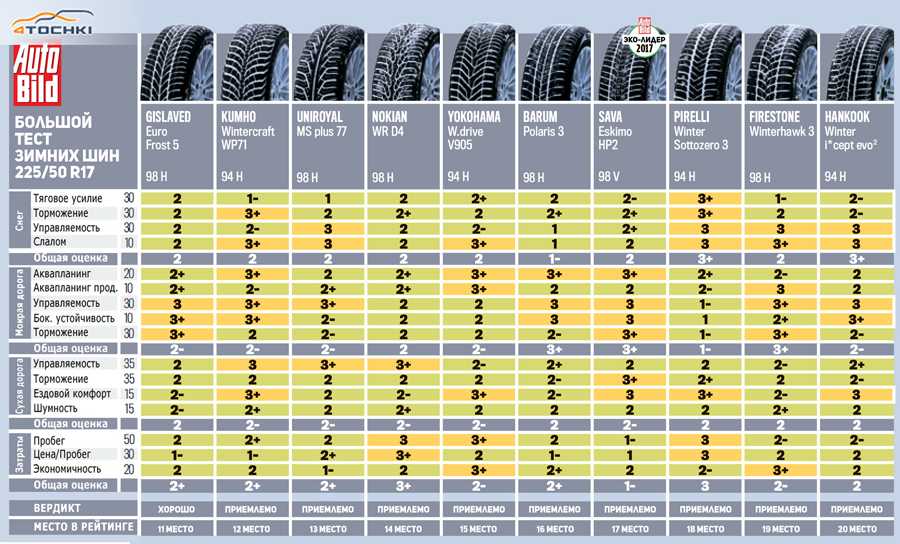 64Mb)
64Mb)
MICHELIN® Agriculture Applicator Solutions
Download (1.72Mb)
Tires for Municipalities
Download (5.78Mb)
MICHELIN® Agriculture Tire and Tube List
Download (3Mb)
MICHELIN® Agriculture Harvester Solutions
Download (1.24Mb)
MICHELIN® On/Off-Road Tires Key Reference Guide
Download (1.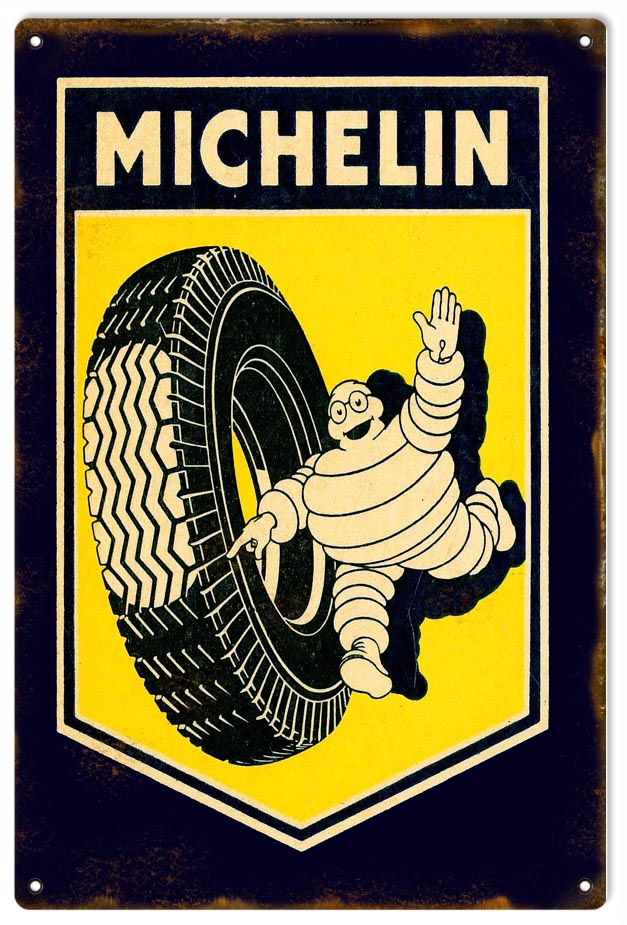 77Mb)
77Mb)
MICHELIN® Compact Equipment Data Book
Download (1.95Mb)
MICHELIN® Agriculture Tractor Solutions
Download (1.44Mb)
Material Handling - Complete Portfolio
Download (5.93Mb)
MICHELIN® Construction Tires
Download (5.55Mb)
John Deere MICHELIN® Tire Fitments
Download (1. 5Mb)
5Mb)
MICHELIN® X® TWEEL® Airless Radial Tire Family
Download (4.58Mb)
MICHELIN® X® TWEEL® Airless Radial Tire Fitment Guide
Download (2.37Mb)
MICHELIN® Ultraflex Guarantee
Download (1.35Mb)
MICHELIN® AG TIRES 90 Day Promise Guarantee
Download (272.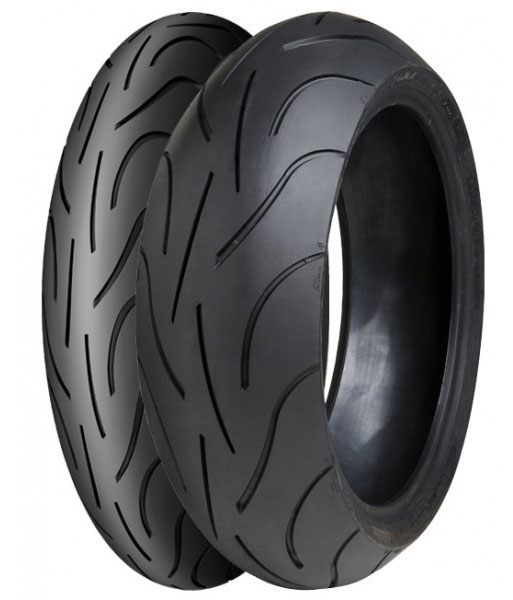 9Kb)
9Kb)
MICHELIN® Technical Data - Earthmover Tires
Download (44.36Mb)
MICHELIN® MEMS 4 Brochure
Download (9.73Mb)
MICHELIN® Technical Data - Handling, Port, Airport, and Intermodal Tires
Download (9.31Mb)
MICHELIN® Consulting Brochure
Download (382. 55Kb)
55Kb)
MICHELIN® On/Off-Road Tires
Download (1.77Mb)
MICHELIN® 2021 Usage and Maintenance Guide
Download (7.55Mb)
MICHELIN® 6 Month No Flat Guarantee - STABIL'X® XZM OR XZR
Download (1.08Mb)
MICHELIN® Earthmover, Off-The-Road, and Industrial Tires Limted Warranty
Download (322.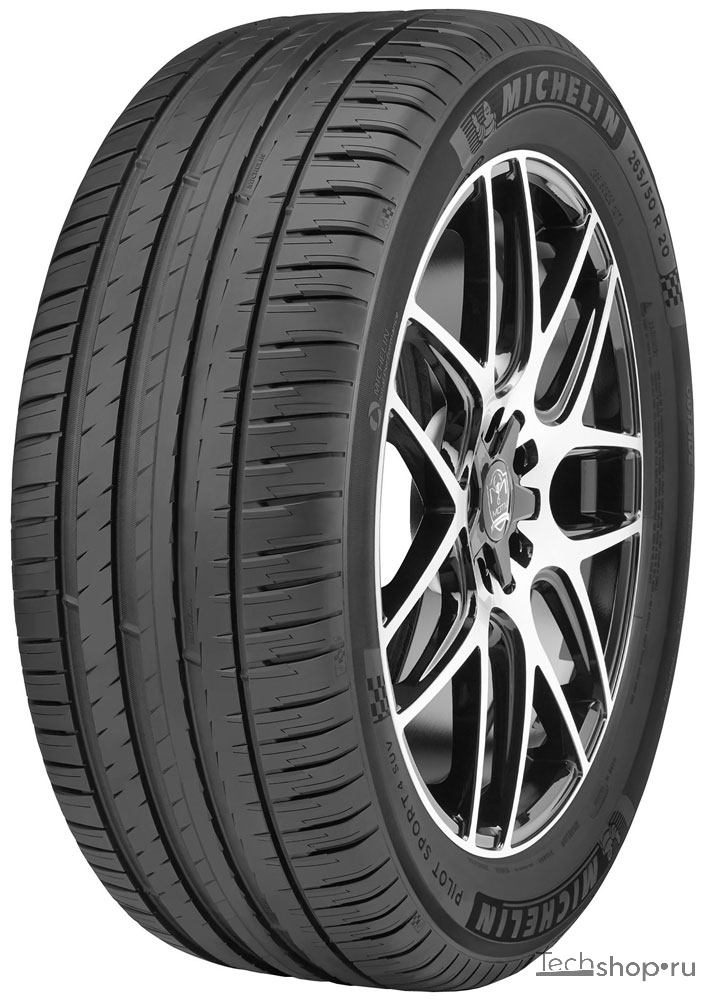 77Kb)
77Kb)
MICHELIN® Earthmover Total Satisfaction Guarantee
Download (347.36Kb)
MICHELIN® 30-Day Guarantee - XHA, XTLA and XGLA2
Download (2.13Mb)
MICHELIN® 90-Day Satisfaction Guarantee - STABIL'X® XZM or XZR
Download (1.05Mb)
XR
2 Pages
Compare
Remove all
Compare up to 10 products
Michelin has production sites in 17 countries in 67 plants:
MICHELIN products are available in 170 countries and are manufactured to the same Group quality standards worldwide.
Russian-made MICHELIN tires are sold not only in Russia.
MICHELIN tires in our online shop are not sorted by place of production. It is difficult to say who is the manufacturer of a particular product in the catalog. It doesn't matter. All MICHELIN tires sold by authorized dealers perform equally well.
No, it doesn't. Now many world brands have their own factories in Russia. At the same time, the requirements for product quality remain unchanged regardless of the place of production.
Tires made in Poland or Germany are of the same high quality. For all Michelin production sites, there is a single workflow for each tire model. Therefore, the consumer will not be able to distinguish a tire produced, for example, in Poland from a similar model produced in a German plant.
Tests and tests conducted by independent organizations have confirmed that Russian or Asian-made MICHELIN products are identical to their Western counterparts in terms of performance.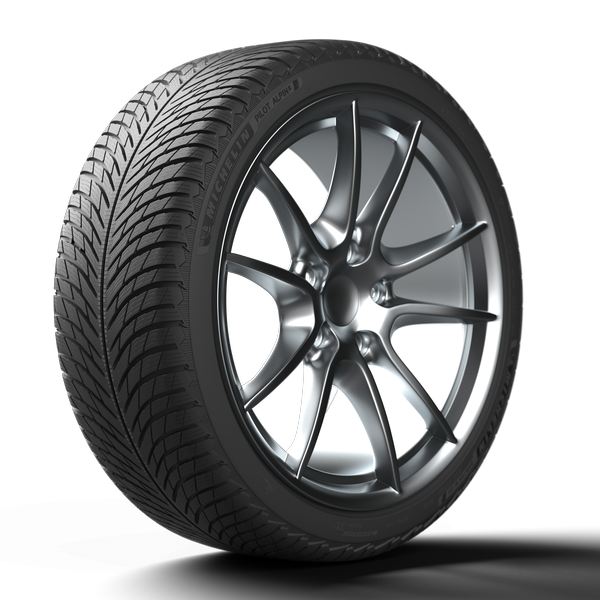
All MICHELIN branded tires carry a 5-year warranty from the date of manufacture against defects in workmanship and materials.
MICHELIN tires purchased from the TYREPLUS network of tire centers are covered by another one-year warranty. It includes free repair or replacement of tires within 12 months from the date of purchase.
An automotive publication conducted a test comparing MICHELIN Energy Saver tires in size 180/60R15 made in Spain with a similar model in the same size made in Russia.
Tests have shown that both tires have the same characteristics: tread depth, handling (both dry and wet asphalt), wear resistance, braking properties on dry and wet asphalt. The test pilots of the publication confirmed that they did not notice the difference between the two products presented.
You can find the date and country of manufacture of the tire on the sidewall of the tire. The date is indicated on the DOT marking. The last 4 digits in this marking are the production date. For example, 4513: where 45 is the week of production, 13 is the year of production.
The date is indicated on the DOT marking. The last 4 digits in this marking are the production date. For example, 4513: where 45 is the week of production, 13 is the year of production.
The country of origin is also marked on the tire as "Made in".
The French company Michelin, a manufacturer of road tires, is usually associated with the company logo. This is the so-called "Bibendum", which looks like a stack of tires in the form of a man. This brand is one of the most recognizable in the world. The history of the company has deep roots - it has existed for more than a century and a half.
The company was originally called Barbière Dubret & Co. named after two of its founders. The company will receive its modern name a little later, when the Michelin brothers Andre and Eduard come to the family business. As for the Michelin man logo, the idea of its creation came only 65 years after the first steps in this direction.
And the first steps were taken in the distant 1829 , when Edward Dubret married a Scot Elizabeth Pugh Barker, niece of the notorious chemist Charles Macintosh. Mackintosh created a waterproof raincoat made of rubber fabric, later named after him, and received a patent for his invention in 1823 . The mackintosh raincoat was incredibly popular in the mid-19th century, favored by celebrities such as Frank Sinatra and Dean Martin.
Elizabeth Pugh Barker pioneered rubber play balls for children and began manufacturing them in the Auvergne region of France. At first, she made them by hand, and then with the help of a mechanism created by her husband Edouard Dubret.
Some time later, Elizabeth's husband decided to expand the production of rubber balls, and at 1832 , with the help of his cousin Aristide Barbière, he opened a small business for the creation of agricultural machinery and those same balls in the city of Clermont-Ferrand. The entrepreneurial brothers realized that rubber could become a highly sought-after material in the rapidly advancing industrial age. They began its active use in the production of all kinds of sanitary gaskets.
The entrepreneurial brothers realized that rubber could become a highly sought-after material in the rapidly advancing industrial age. They began its active use in the production of all kinds of sanitary gaskets.
In 1863 the founders of the company signed a cooperation agreement and named the company "Barbière Dubret & Co." ("Barbier Daubree and Co."), which they renamed "É. Daubree and Co." Four years later, a lawyer by profession, a certain Bideau (J. G. Bideau), becomes a business partner of the company. And Ernest Daubrée replaces his father Edouard as director. A year later, the name is changed to "J. G. Bideau & Co.
In 1863–64 the first founders Aristide Barbière and Edouard Dubret die and the company is on the verge of bankruptcy. At that time, the company specialized in the production of agricultural equipment, as well as all kinds of hoses, drive belts made of vulcanized rubber.
In order to somehow improve the current situation in the company and continue the work of his grandfather Aristide Barbière, in 1886 his grandson, 33-year-old engineer Andre Michelin, comes to Clermont-Ferrand from Paris. Three years later, Andre asks his younger brother Edouard to help run the company. Édouard Michelin closes his art studio in Paris and becomes co-owner of what is now Michelin & Co.
Three years later, Andre asks his younger brother Edouard to help run the company. Édouard Michelin closes his art studio in Paris and becomes co-owner of what is now Michelin & Co.
The Michelin plant now occupies a 12-hectare site in Clermont-Ferrand, employing 50 people. Entire blocks are being built for factory workers. The rapid construction of residential buildings solves the problem of the active growth of the city's population, associated with the expansion of the industrial activities of the company. The new working-class neighborhoods are lined up with symmetrical streets and blocks of houses divided into four family housing types. The streets were called, for example, like this: “Kindness Street” or “Vera Street”. The development of this French town is accompanied by the creation of clinics, schools, churches, shops, urban gardens. To this day, the layout of the city retains traces of past buildings.
Attempts are being made to revitalize the company's activities with the release of brake pads called "Silence" ("The Silent"). These products reflect the company's emerging interest in vehicles.
These products reflect the company's emerging interest in vehicles.
In 1891 , a cyclist enters the Michelin plant to repair tires from Dunlop (the world's oldest tire company). The repair took three hours and another whole night for the tire to dry, because then it had to be glued to the rim. The day after the repair, Edouard Michelin rolled the bike out into the factory yard to test it out, but after a hundred meters the tire deflated. After this incident, Edouard Michelin set out to create the perfect tire that would be very easy to repair. Already this year, the Michelin brothers register their first patents for replaceable tires that could be repaired in 15 minutes.
In 1891 the first cycling marathon Paris-Brest-Paris (1200 km) was held, in which Charles Terront won - he covered the entire route in 71 hours 22 minutes. The cycling race was organized by the well-known Parisian publication Le Petit Journal, on the cover of which Terront appeared with his bicycle on Michelin tires, this served as a good advertisement for the previously little-known tire manufacturer.
In 1892 the company organizes the Paris-Clermont-Ferrand bicycle race. The Michelin brothers scatter nails on the road, proving that with a replacement tire, a flat tire is no longer a serious problem. AT 1895 The Michelin brothers created the first car equipped with pneumatic tires and named "Eclair" in this regard. He was taken to the Paris-Bardeau-Paris race - for the first time the car "floated in the air"!
Edouard and André Michelin visit the Universal and Colonial Exhibition in Lyon, where one of the stands was decorated with a pile of tires stacked on top of each other. Edward remarked that "if you attach arms and legs to this pile of tires, then it will look like a person." Four years after this incident, Andre met the cartoonist Marius Rossillon, known under the pseudonym O'Galop (O'Galop).
The artist showed André his advertising sketch, which showed a large figure holding a huge mug of beer and pronouncing the words of the ancient Roman poet Horace in Latin: “Nunc est bibendum” (“If you drink, then now!”).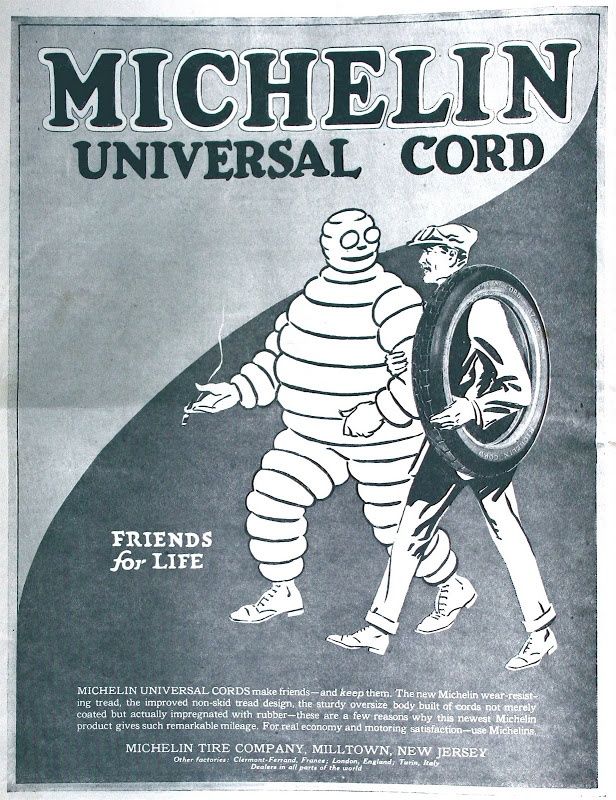 This picture was supposed to be an advertisement for the Munich brewery, but for some reason the client refused it. Andre immediately agreed to replace the existing figure with a character made from tires. Thus was born the symbol of the Michelin company - Bibendum. Today it is one of the most recognizable trade brands, and is represented in more than 150 countries around the world.
This picture was supposed to be an advertisement for the Munich brewery, but for some reason the client refused it. Andre immediately agreed to replace the existing figure with a character made from tires. Thus was born the symbol of the Michelin company - Bibendum. Today it is one of the most recognizable trade brands, and is represented in more than 150 countries around the world.
1898 is considered to be the birthday of the official symbol of the company, because it was then that the first advertising poster with Bibendum was prepared. He was depicted as a visitor to a bar, offering to drink from a mug, which contained various objects that were dangerous on the road - nails, sharp stones, broken glass, and so on. The signature was the following saying in literal translation: “To your health, so to speak. Michelin tires will drink all the obstacles to the bottom. In other words, the advertisement made it clear to the potential consumer that Michelin tires would be able to provide the driver and passengers of the car with a comfortable and soft ride, despite any road “roughness”.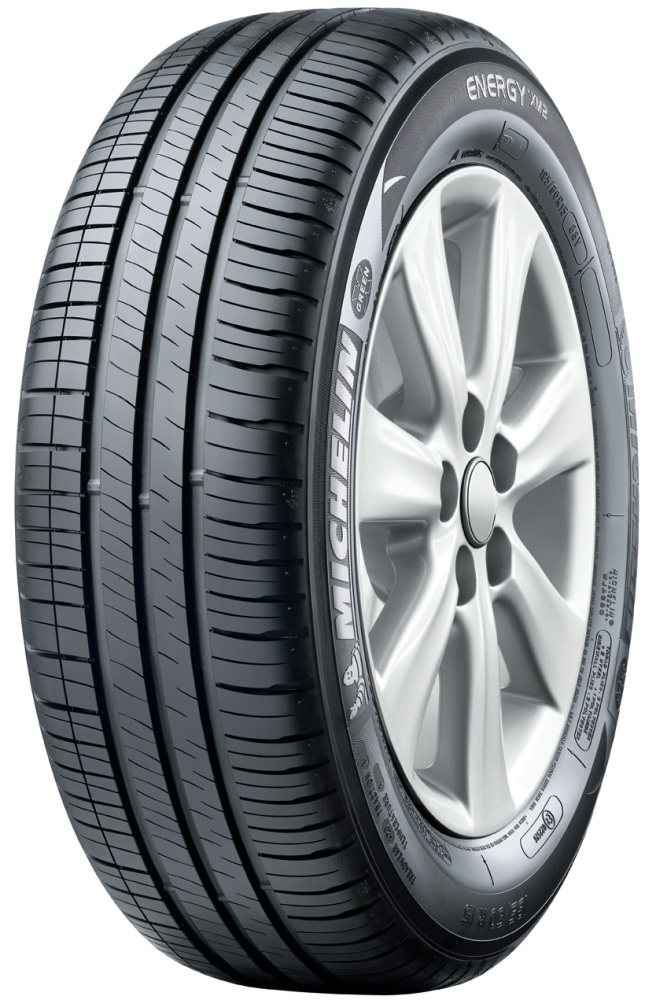
The company used this poster for 15 years, just substituting the names of new products under Bibendum's image. It is impossible to say for sure when the word "Bibendum" became a household name for the character. However, it is known for certain that in 1908 the Michelin company published a column in one of the newspapers called "Bibendum".
In 1898 in the Russian Empire (St. Petersburg) the first Russian book devoted to automobiles was published: "Self-propelled carriages with steam, gasoline and electric engines". The publisher was N. Pesotsky.
Two chapters were dedicated to Michelin, its products and tire tests. In 1899 , a car called "Jamais Contente" drove at a speed of 100 km / h - it was wearing Michelin tires. This became a new record for the speed of driving a car.
1900 The company's history is marked by the publication of the first Michelin Red Guide.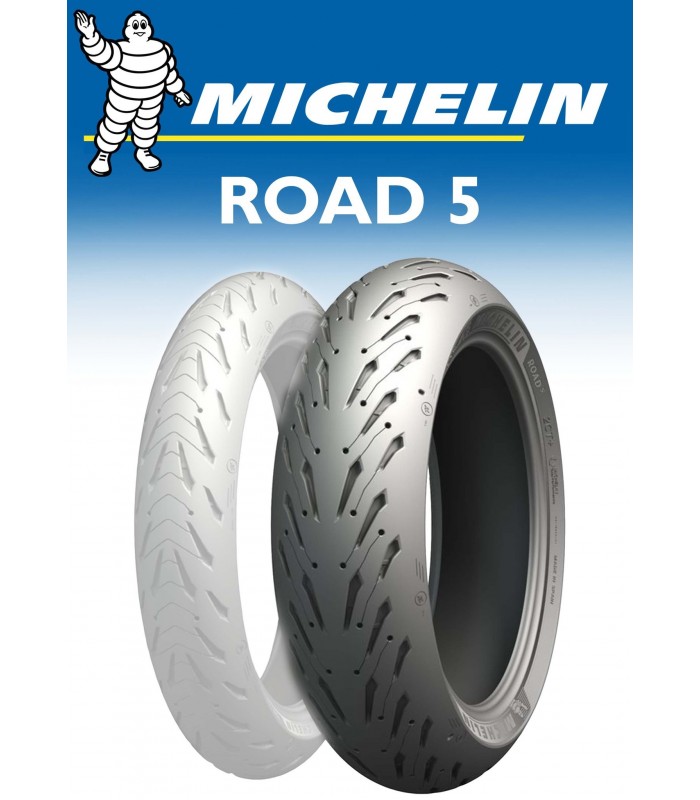 The guide was originally a list of various places that could be useful to the traveler, for example: hotels, repair shops, eateries or paid car parks. It was distributed free of charge and had a very moderate demand. However, a great future awaited him. In the first 35,000 copies of the guide, André Michelin's prophetic words were printed: "This guide was born at the dawn of a new century, and will last as long as the century itself."
The guide was originally a list of various places that could be useful to the traveler, for example: hotels, repair shops, eateries or paid car parks. It was distributed free of charge and had a very moderate demand. However, a great future awaited him. In the first 35,000 copies of the guide, André Michelin's prophetic words were printed: "This guide was born at the dawn of a new century, and will last as long as the century itself."
From 1904 to 1906 the company is actively developing. The first warehouses of products appear in the Russian Empire - Moscow and Warsaw. The Michelin plant in Clermont-Ferrand already occupies almost 30 hectares and employs almost 4,000 people. A new Michelin Sole tire model is released, equipped with special metal pins. This invention is now universally known as "studded tires" for better grip on the road.
A subsidiary, Michelin Tire Co., is founded in London. Ltd." Michelin builds its first factory outside of France in Turin (Italy).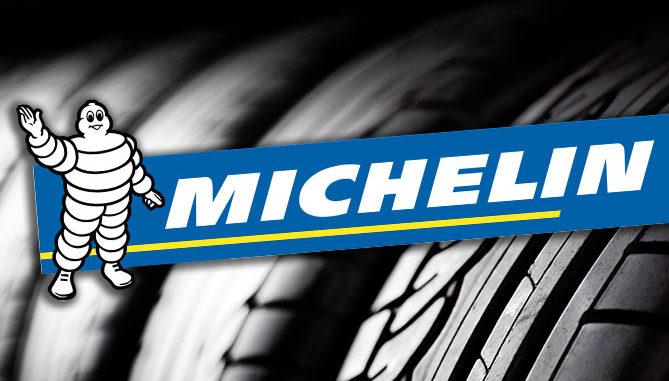 In 1907 Michelin crosses the Atlantic and builds the first plant in the USA in Miltown, New Jersey (factory closed in 1931 ). Another plant is under construction in Clermont-Ferrand. In honor of the first international automobile exhibition in St. Petersburg, the Moscow-St. Petersburg race was organized. The winner is A. Duret in a Lauren-Dietrich car equipped with Michelin tires. The average speed of the winner on the route reaches 70 km/h. In addition to the winner of the competition, several other participants started on Michelin tires.
In 1907 Michelin crosses the Atlantic and builds the first plant in the USA in Miltown, New Jersey (factory closed in 1931 ). Another plant is under construction in Clermont-Ferrand. In honor of the first international automobile exhibition in St. Petersburg, the Moscow-St. Petersburg race was organized. The winner is A. Duret in a Lauren-Dietrich car equipped with Michelin tires. The average speed of the winner on the route reaches 70 km/h. In addition to the winner of the competition, several other participants started on Michelin tires.
In 1908 Michelin announces the award of the Grand Prix to the winner of the air race. This was done with the aim of developing aviation. The race consisted of a flight from Paris to Clermont-Ferrand, landing on the extinct Puy-de-Dome volcano, which is located about 15 km from Clermont-Ferrand. This feat three years later was accomplished by two Frenchmen - Renaud and Senuk (Renaux, Senouque).
In the same 1908 , the company creates a new type of tire - "double" or "twin" ("Twin"), which will play a big role in the development of the first trucks. André Michelin opens the first "Travel Information Desk" in Paris to help tourists plan their travel itineraries.
An automobile exhibition is held in Moscow, the St. Petersburg-Moscow race is timed to coincide with it. The winner is Victor Emery in a Benz car fitted with Michelin tires. The time for passing the distance is 8 hours 44 minutes.
At the beginning of 1909 Michelin tires were sold in many cities of the Russian Empire, including: St. Petersburg, Moscow, Odessa, Kyiv, Kharkov, Riga and Warsaw. The Michelin Conversations column appeared in the Russian magazine Avtomobil, which lasted two years. It published useful information about tires of various brands.
The first Michelin road map in 1/200.000 scale was published in 1910 . The company distributes 30,000 street signs to municipalities.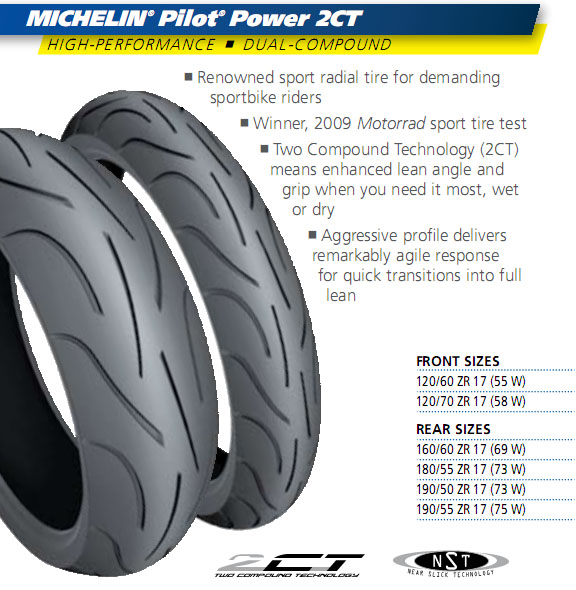 They are called "thank you" signs ("Plaques Merci"). The appearance of such signs on the streets was the beginning of the development of traffic rules.
They are called "thank you" signs ("Plaques Merci"). The appearance of such signs on the streets was the beginning of the development of traffic rules.
20 January 1911 Michelin House opens its doors in London (at 81 Fulham road), the company's first UK headquarters.
In the same year, in the St. Petersburg-Sevastopol race, Michelin tires receive an honorary Imperial Prize. Successful performance in these and subsequent races, as well as the company's participation in automobile exhibitions of that time, attracted the attention of Russian motorists to the Michelin brand and dramatically increased the popularity of its tires.
1912 was marked by a very important event in the history of the company. The Michelin Brothers are launching a petition calling for all roads in France to be numbered and signposted. Eight years later, with the support of Michelin, this idea will be carried out in the UK.
At the end of 1912 Michelin tires could already be bought in 29 cities of the Russian Empire, and in 1913 the number of cities reached 33 and continued to grow. At the same time, the Michelin dealer network in Russia before the start of the First World War was one of the most extensive. At that time, several dealers worked in a number of cities: in St. Petersburg - five, in Moscow - four, in Warsaw - three, in Baku and Odessa - two each.
At the same time, the Michelin dealer network in Russia before the start of the First World War was one of the most extensive. At that time, several dealers worked in a number of cities: in St. Petersburg - five, in Moscow - four, in Warsaw - three, in Baku and Odessa - two each.
In the same period, a competitive selection of trucks for the Russian army took place, called the “Military Truck Run”. Several vehicles were equipped with Michelin tires and the vehicles successfully passed the test. The company demonstrates its products at a car factory in Odessa. Michelin non-slip tires under the brands Semelle Ordinare and Semelle Elargie are being introduced to the Russian market.
The company invents the replacement steel wheel in 1913 , which became the prototype of the spare wheel. Michelin products are exhibited at the 4th largest automobile show in St. Petersburg in the history of pre-revolutionary Russia. The company's stand is one of the most representative at the exhibition. The “Russian General Agency of Michelin Tires” opens in Moscow, which lasted until 1915 , and was closed due to the First World War that began a year earlier.
The “Russian General Agency of Michelin Tires” opens in Moscow, which lasted until 1915 , and was closed due to the First World War that began a year earlier.
Less than three weeks after the First World War was declared in 1914 , Michelin offers to help the French government build aircraft. The first hundred aircraft were handed over to the state free of charge, the rest were sold at the usual cost. Overall Michelin produced 1884 aircraft at its Clermont-Ferrand plant. Tire warehouse for a while turns into a hospital, which housed almost 3,000 wounded soldiers.
B 1914 The Russian General Tire Agency Michelin begins to publish its own magazine Tire, which became the first specialized advertising and information publication of its kind in Russia (it lasted only a year).
The company's ties with Russia continued after the October Revolution. Michelin products continued to be supplied to Russia during the formation of the Soviet tire industry.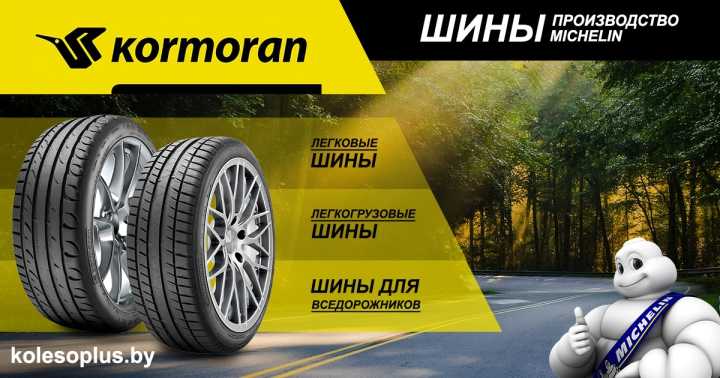 The previous level of relations during the years of Soviet power, of course, was not achieved. In the USSR, there was a state monopoly on foreign trade with other countries, so Michelin products were imported into the country through the relevant Soviet organizations. One of the most popular import items at that time was tires for heavy trucks and mining trucks.
The previous level of relations during the years of Soviet power, of course, was not achieved. In the USSR, there was a state monopoly on foreign trade with other countries, so Michelin products were imported into the country through the relevant Soviet organizations. One of the most popular import items at that time was tires for heavy trucks and mining trucks.
In 1916 the company is building a runway for aircraft that can take off from it even in heavy rain. Thus was built the world's first concrete runway in the Ulnau (Aulnat) near Clermont-Ferrand.
Michelin's Travel Information Office, established in 1919 , provided free information on roads, distances and service stations in all countries. A test track is being built at the factory in Estaing to test tire durability. AT 1921 The company opens a third factory in Clermont-Ferrand: "Cataroux". For the first time, a low-pressure passenger tire of the "Comfort" model (passport pressure in the tire is 2. 5 bar) covered 15,000 kilometers in 1923 .
5 bar) covered 15,000 kilometers in 1923 .
Two years later, Michelin acquired almost 9 hectares of land in the southeastern region of Vietnam near the village of Dautieng (Dautieng), as well as 5.4 hectares in Tian Loi (Thuan Loi) to create their own rubber plantations in these territories ( at 1975 they will be closed).
The Dautieng Plantation was located 72 kilometers from Saigon and was the largest rubber plantation in all of Vietnam. During the Vietnam War, hostilities took place here, and the neighboring villages in which the Vietnamese workers lived were used by soldiers as a temporary shelter. Of course, during the military operations, the plantation was significantly destroyed, but the state refused to compensate for the damage caused by Michelin. Despite some difficulties, the company continues to develop and release new tire models. Thus, another tire for trucks, “Comfort”, was put into production.
In 1926 Michelin publishes the first tourist guide (future Green Guide) about the northwestern region of France. The company does not forget about its first brainchild, the "Red Guide", which begins to specialize in describing restaurants and creates a three-star rating system for them.
The company does not forget about its first brainchild, the "Red Guide", which begins to specialize in describing restaurants and creates a three-star rating system for them.
The Michelin Red Guide is the most famous and influential restaurant rating today. The new owner of one Michelin star immediately turns into a legend. At the same time, the loss of a star for a well-known player in the restaurant market not only turns into a personal tragedy for his chef, but also inevitably leads to a noticeable decrease in the establishment's income. The difference in the turnover of the institution before and after the publication of the new rating can be millions of euros.
In 1927 , the plant in Clermont-Ferrand already employs 10,000 people. The first factory was built in England, in Stoke-on-Trent (Staffordshire), and another production is being launched in Italy, in Trent. In 1928 Edouard Michelin appoints his son Etienne Michelin as co-owner of the company.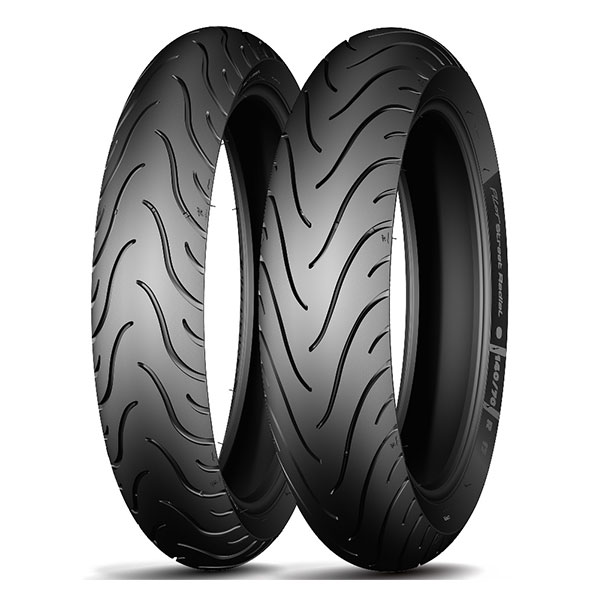
In 1929 Michelin creates the signature railway car and the first train tires, which are still used today in the subways of Montreal, Mexico City, Santiago, Paris, Lyon, Marseille, Lille, Toulouse and Turin. AT 1930 Michelin files a patent for the tubeless tire, the forerunner of the tubeless tyre.
In 1931 the company opens its first plant in Karlsruhe, Germany. At the same time, the first road sign was created, the inscription on which was applied using volcanic lava. This method was later adopted by France.
In 1932 , Michelin introduces the first "Super Comfort" low-pressure tire with a service life of up to 30,000 kilometers. A year later, a factory called "Bella Vista" is under construction in Argentina (closed at 1953 ).
Etienne's brother Pierre Michelin replaces Etienne as managing partner. In 1934 , special strips appeared on the tires of the Stop model, designed to protect the wheels from skidding on wet roads. Plants were built in Spain (Lasarte) and Czechoslovakia (Zabehlice, closed in 1945 ).
Plants were built in Spain (Lasarte) and Czechoslovakia (Zabehlice, closed in 1945 ).
1932 is also marked by a Michelin family tragedy. On August 27, at the age of 34, Edward's son, Etienne Michelin, dies in a plane crash. This event was covered in the form of a short note in the British magazine Flight (the world's oldest published aviation magazine, has been in existence since 1909 ).
In 1935 Citroën goes into debt to its biggest creditor, Michelin. Pierre Michelin is appointed President of the company, and Pierre Boulanger is appointed Vice President. Under the "Citroën" banner, Michelin begins to develop a small car project, resulting in the "Citroën 2CV".
In 1937 the Michelin plant (Zuen, closed in 1986 ) is built in Belgium. The first wide road tire of the "Pilot" model significantly improves vehicle maneuverability at high speed. The Metalic truck tire had a steel cord and was resistant to overheating and high loads.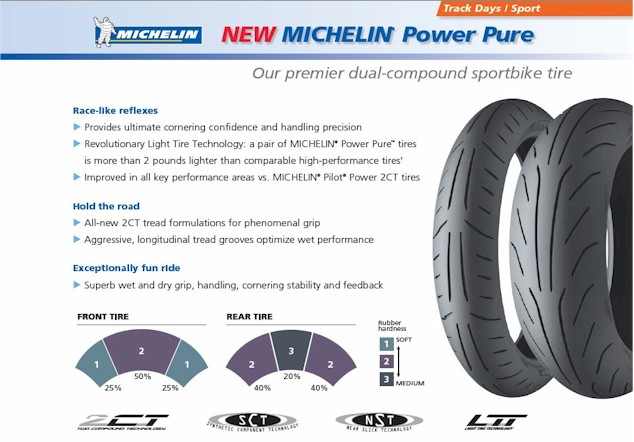
On December 29 of the same year, another tragedy occurs in the Michelin family. The second son of Edouard Michelin, Pierre (as well as his brother Etienne - at the age of 34), dies in a car accident near Montargis (Montargis). In connection with the death of both sons, Edouard Michelin, for whom this was undoubtedly an irreparable loss, is forced to transfer the reins of the company to his son-in-law. Thus, in 1938 , Robert Puiseux becomes the head of the company. Pierre Boulanger leads Citroën. From now until 1955 the company will be managed by third parties.
In 1940 Michelin changes its name to Michelin Rubber Manufacturing. In 1945 the bombed Cataroux plant in Clermont-Ferrand was rebuilt and refurbished in accordance with modern technologies. Intensive tire research continues: a radial ply design has been developed. June 4, 1946 Michelin files a patent for a radial tire.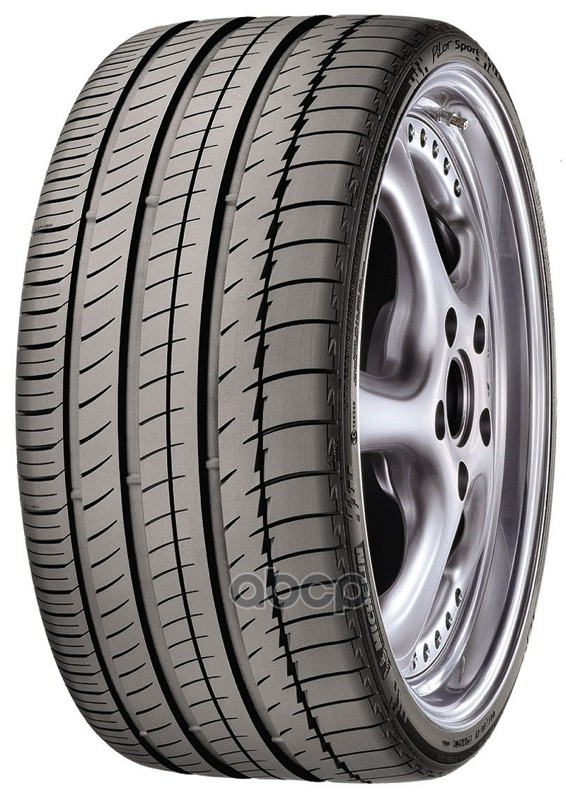
In 1948 the Citroën 2CV is presented for the first time at the Paris Motor Show. A year later, Michelin's patented radial tire is brought to market under the name "Michelin X". In 1951 , the Michelin General Management Company (Generale des Etablissements Michelin) and the Michelin French Manufactory (Manufacture Francaise des Pneumatiques Michelin) for the production of pneumatics were established. Emile Durin joins Robert Poiseau as Michelin Partner.
For the first time, Paris metro trains are fitted with branded tires. Italian automaker Lancia orders Michelin X tires as standard on its vehicles. At the 24 Hours of Le Mans, Lancia B20s on Michelin X radial tires and Renault 4CVs on Michelin cross-ply tires take first place in their respective categories.
In 1952 , Michelin uses a radial ply design on truck tires. AT 1955 The son of the deceased Etienne Michelin, François Michelin, joins the company and becomes the owner of the company together with Robert Poiseau.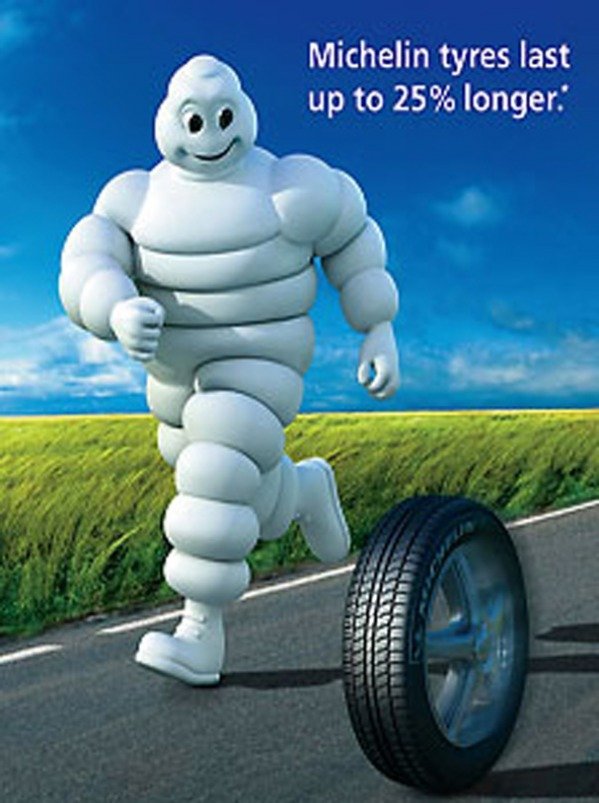 Most tire companies in Europe are starting to use radial cord construction technology in their production.
Most tire companies in Europe are starting to use radial cord construction technology in their production.
In 1959 Michelin releases the first radial tire for ground moving machines. In 1964 the Michelin French Manufacture takes over Pneu Laurent.
North of Clermont-Ferrand at 1965 Ladoux Research Center opens. Invented the first asymmetric tire for high-speed cars - "Michelin XAS". In 1966 Michelin employs 81,000 people worldwide, including 37,000 in France. Francois Michelin appoints his cousin Francois Rollier as Managing Partner.
In 1967 the Michelin X tires are replaced by the improved Michelin ZX. A year later, the first "Green Guide" of New York for North America was released. Bicycle tire company Wolber becomes a Michelin affiliate in 1972 . Two years later, Michelin sells part of the Citroën shares to the Peugeot group. In 1975 , the Michelin ZX tire model was replaced by the more modern TRX and XZX.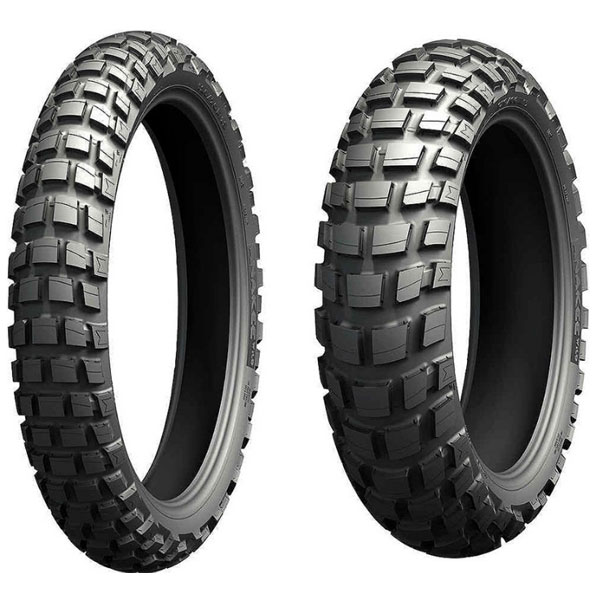
In Laurens, North Carolina (USA), and Almeria (Almería, Spain) in 1977 test centers were opened. In 1978 Robert Poiseau is awarded the "Elmer A. Sperry" medal for services to the development of the traffic and tire industry. Michelin radial tires help Ferrari win the world championship in iconic Formula 1 racing in 1979 .
1981 Michelin Air X, the first radial aircraft tire, is launched. Michelin becomes the owner of a controlling stake in Kleber-Colombes (France). The company opens a new plant in Columbia, South Carolina (USA). In Brazil, two factories are being built - Campo Grande (Campo Grande) and Resendi (Rio de Janeiro). Michelin opens 9.12 hectares of rubber plantations in the state of Mato-Grosso and buys additional plantations in the state of Bahia.
In 1982 , a new Michelin factory was built in Waterville, Canada. A couple of years later, Michelin creates the first motorcycle radial tire, which will be introduced to the market in 1987 .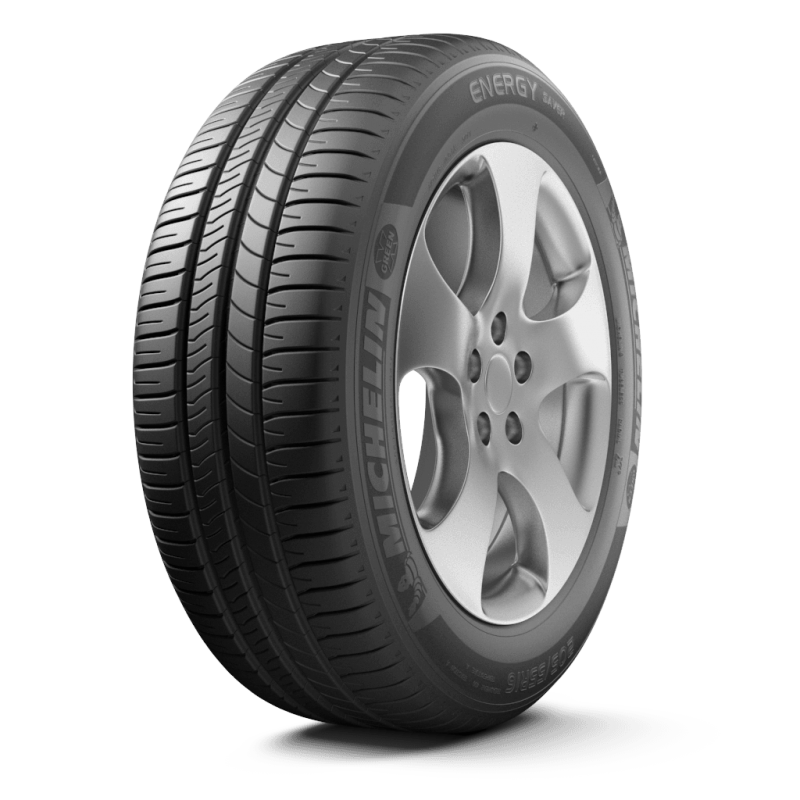
In 1986 François Michelin appoints Rene Zingraff as Managing Partner. The company produces 40% of all tires of the total percentage in North America.
In August 1987 , Bibendum Restaurant & Oyster Bar was opened at Michelin House, along with offices for Octopus Publishing and The Conran Shop.
In 1988 Michelin builds production sites in Asia: Thailand and Japan. Over the next year, the company is developing a computerized system that allows travelers to create road maps with detailed instructions. This system is available on the French computer information system Minitel (before the advent of the Internet, it remained the most popular telecommunications tool in the country).
After the acquisition of Uniroyal Goodrich Tire (USA) in 1990 , Michelin reached the required size for stable development in North America. In 1991 François Rollier retires and François Michelin appoints his son, 28-year-old Edouard Michelin, as Managing Partner.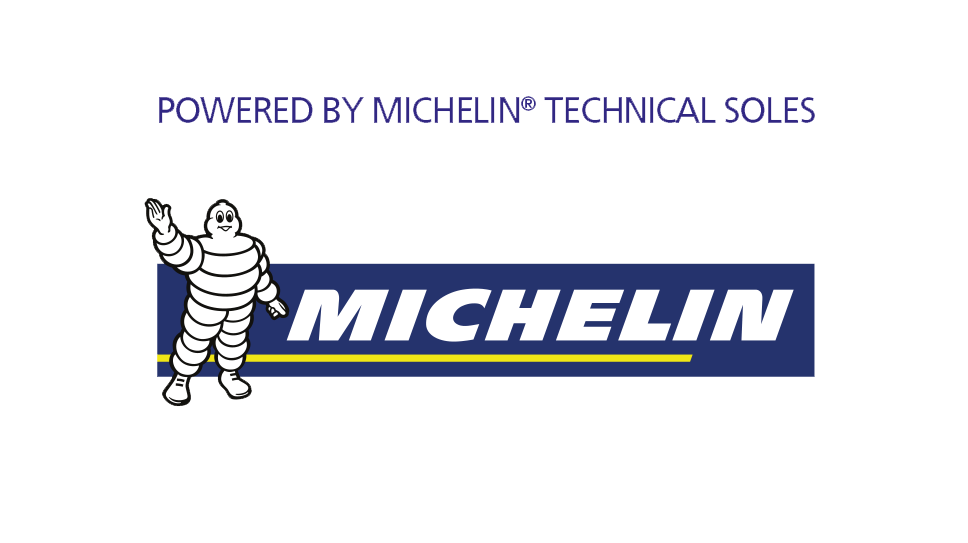 In 1993 Michelin invents a new production technology - "C3M". It saves energy, automates production processes better, etc. Trial testing of the C3M technology is being carried out at the Clermont-Ferrand plant.
In 1993 Michelin invents a new production technology - "C3M". It saves energy, automates production processes better, etc. Trial testing of the C3M technology is being carried out at the Clermont-Ferrand plant.
In 1994 , the world saw Michelin Energy tires, the first tires whose main feature was improved fuel efficiency. After an almost 80-year break, a Michelin representative office is reopening in Moscow. The Polish tire company Stomil-Olsztyn became part of the Michelin group in 1995 . In the Philippines, in Manila, a new plant opens. Michelin tires are used for the first time on a space shuttle.
In 1996 the Hungarian company Taurus was taken over by Michelin. Michelin's first factory built in China. Two new manufacturing sites using C3M manufacturing technology opened in the US and Sweden. Michelin develops a revolutionary idea (which later became the basis of the "PAX" system in 1998 ) - a reinforced tire that allows the car to continue moving if the pressure inside is lost. The company launches the first colored car tire on the market.
The company launches the first colored car tire on the market.
In 1997 Michelin buys a controlling stake in Kronprinz G.A. (Germany). A year later, the Colombian company Icollantas was taken over by Michelin. Bibendum is celebrating its centenary. Michelin establishes the annual "Michelin Challenge Bibendum" event dedicated to the demonstration of hybrid cars. The first such program took place in Clermont-Ferrand and in 2011 in Berlin, Germany. AT 1999 Michelin launches Delta Radial tires for fast and powerful motorcycles.
Bibendum was recognized as the best logo in the world by a professional jury - this happened in 2000 . At the same time, Michelin announces its participation in Formula 1 and wins four victories in the future.
In 2001 Michelin develops a new technology for aviation, enabling the resumption of Concorde flights (NZG radial tire technology). The company becomes the leader in tire manufacturing in China and Romania and launches a series of navigation systems and services under the ViaMichelin brand.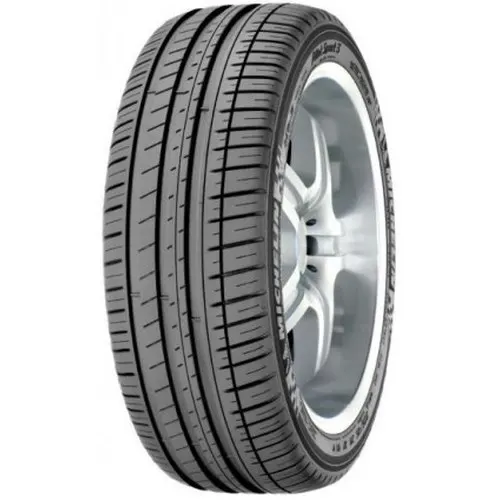
2002 Michelin continues to develop production in Algeria and begins construction of a new plant in Davydovo (Orekhovo-Zuevsky district, Moscow region, Russia), which will be opened in 2004 . In the Russian market and in the CIS countries, Michelin sells passenger, truck, large-size, aviation and agricultural tires. In 2005 the Michelin plant in Davydovo produced the one millionth tire in a row.
September 2006 , Michel Rollier comes to the post of director of the company in connection with the death of the previous owner, Eduard Michelin.
In 2007 Michelin celebrates the centenary of its activity in Russia. In the largest cities, festive events dedicated to the beginning of the school year are organized under the motto "A child's life is priceless!". Creation of the Michelin Davydovo Fund, intended for financial support of socially significant projects in the rural settlement of Davydovo.
As part of its activities, the Foundation supports projects aimed at improving living conditions, social infrastructure and the environmental situation in Davydovo. Among the implemented projects of the Michelin Davydovo Foundation: installation of children's sports and play complexes in a rural settlement, assistance to the Davydovskaya district hospital, assistance to the Atlant Sports Club for persons with disabilities in the Orekhovo-Zuevsky municipal district, installation of educational equipment in Davydovo schools and much more.
In 2009 , the Michelin Energy Saver summer tire and the new generation Michelin X-Ice North 2 studded tire will be presented in Russia. Start of sales of Michelin Guides in Russia. Release of the first "Green Guide" in Russian. Russian has become the tenth language in which Michelin guides are published. Establishment of the Eastern European Geographical Area of the Michelin Group. In the same year, the 100th edition of the Michelin Guide is published in France.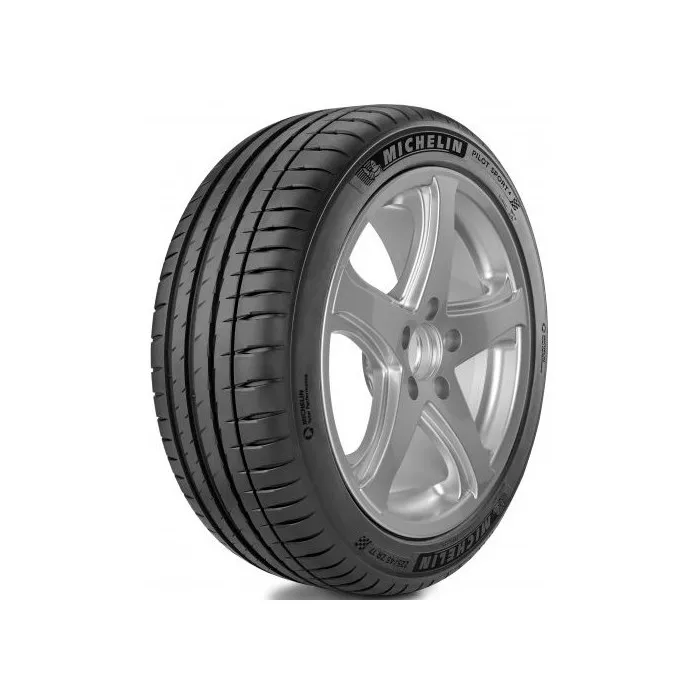
In 2010 Michelin commercial agency was opened in Ukraine. The Michelin Pilot Sport 3, as well as the Michelin Pilot Super Sport for super sports cars, are presented on the tire market. The last of these models will be installed on the new and most powerful Ferrari F12 Berlinetta to date.
2011 Presentation in Russia of a new studded winter tire for SUVs "Michelin Latitude X-Ice North 2". Opening of a shop for retreading Michelin truck tires in Davydovo. The Michelin House in London is celebrating its 100th anniversary, and celebrations are timed to coincide with it.
In 2012 Michelin's new "Pilot Sport" and "Pilot Alpin WRC" tires helped Sébastien Loeb and Daniel Elena (Citroen DS3 WRC) win their sixth Monte Carlo Rally victory of their careers. The latest models have been developed specifically for this race - the road conditions in the foothills of the Ardèche Vercors have given Michelin the opportunity to demonstrate the tire's potential in terms of grip, handling, durability and safety.
In 2012 Michelin was named "Tire Manufacturer of the Year" by the Tire Technology International Awards for Innovation & Excellence 2012 as part of 21 global renowned expert. This is the second time that Michelin has received this award: in 2010 the company already had the honor of becoming "Company of the Year". The award ceremony was held in mid-February at the Tire Technology Expo in Cologne, Germany.
The Michelin Group is present in more than 170 countries around the world. The company has 70 production sites located in 18 countries on five continents. Produced more than 175 million tires, more than 10 million road maps and guides.
With a mission to advance the movement of goods and people, the Michelin Group develops, manufactures and markets tires for all types of vehicles - aircraft, cars, trucks, bicycles, large and agricultural vehicles, motorcycles, space shuttles. In addition, Michelin continues to publish tourist guides, hotel and restaurant guides, road maps and atlases, and offers digital products and services that enhance mobility.
For each city included in the guide, Michelin provides a wealth of reference information, including postal and telephone codes, altitude, number of inhabitants, number of hotel rooms, information about the tourist office, the attractiveness of ski slopes and golf courses, features of local exhibits museums, antiquity and the history of castles, etc.
The average guide contains up to 150 city maps showing hotels and restaurants, major tourist attractions and architectural monuments. Information on distances between cities is especially presented. Special attention is paid to the description of the most interesting events.
All research and development is carried out at the Michelin Technology Centers in Europe, North America and Asia.
Michelin owns such important technological discoveries as the first radial tire ( 1946 ), the first energy-efficient silica tire ( 1992 ), the first tire with suspension system and "Michelin Active Wheel" brake disc ( 2008 ) and many others.